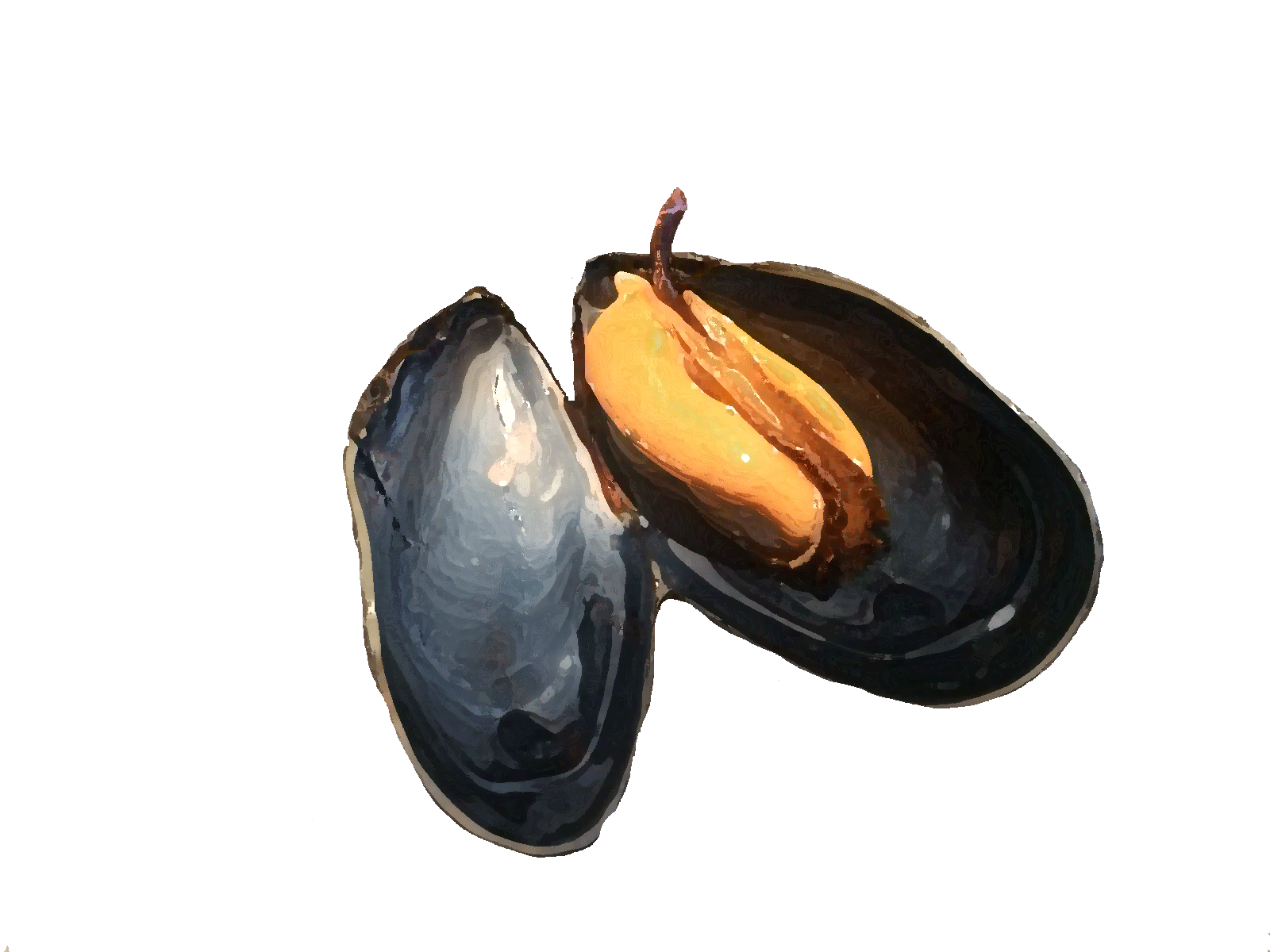Mussels filter out all kinds of suspended solids (seston) from the water. The seston includes plankton, bacteria and inorganic material. Plankton is a collective term for all organisms floating freely in the water. Zooplankton is formed by animal organisms, while phytoplankton is formed by plant organisms (algae). Mussels feed primarily on phytoplankton but other particles in the water, such as dead organic matter and bacteria attached to it, microzooplankton and for larger mussels, mesozooplankton, can also be important as food sources.
Algae species
The type of phytoplankton the mussel feeds on affects its growth. The quality of the particles filtered out of the water by the mussels can vary greatly throughout the season. Silica algae (diatoms) are very suitable as food; foam algae that occur later in the season are of much lower quality. A good ratio of algae species ensures optimal growth, depending on the concentration, quality and cell size of the algae.
Food size
Mussels can absorb particles larger than 2 µm. However, the filtering efficiency below 4 µm is lower and increases as the particles get larger, with a maximum around 30-35 µm. When relatively more small particles are present in the water, the maximum filter efficiency drops to a smaller diameter. This indicates that mussels can adjust filtering efficiency according to the ratio of particle size in the water. This is useful because the size distribution of particles in water is very variable and seasonal. For example, in summer you have more particles in the water larger than 4 µm than in winter. Adult mussels can also ingest larger animal plankton with sizes between 100 and 1,000 µm, and animals as small as 3 to 6 mm have even been found in the intestines of mussels.
The food requirements of mussel larvae are different from those of mussel seed or adult mussels. Because larvae are smaller in size, they can only take up the smaller types of algae. The food for mussel larvae consists mainly of phytoplankton and ultraplankton. Ultraplankton has a cell size smaller than 2 µm. Ultraplankton makes up 50% of the total phytoplankton found in the wild.
Concentration and clearance rate
In addition to the quality and cell size of the algae, the available concentration in the water determines the growth rate and survival of mussels. When food is in short supply, mussels do not grow optimally. When there is a surplus of food, growth decreases due to possible inefficient intake of algae. An adult mussel can filter 2 to 3 liters of water per hour. However, smaller individuals have relatively higher filtration rates; 1 kg of small mussels will filter more than 1 kg of large mussels. The filtration rate of a mussel larva is 0.1 to 0.6 ml/day. A clam larva requires a food supply of algae of 30-60% of its own weight per day. Efficient growth requires 60-70% of its own weight per day. A larva weighs 0.1 mg in the initial stage and 1 mg in the final stage.


